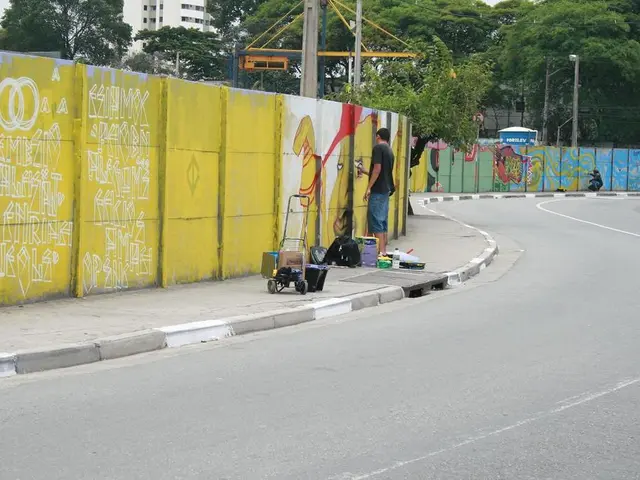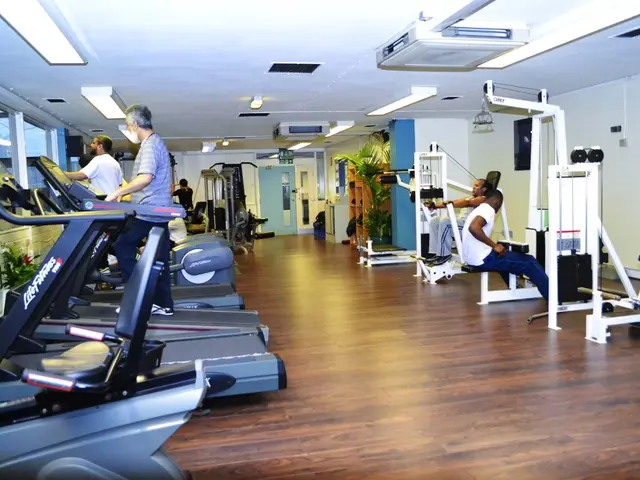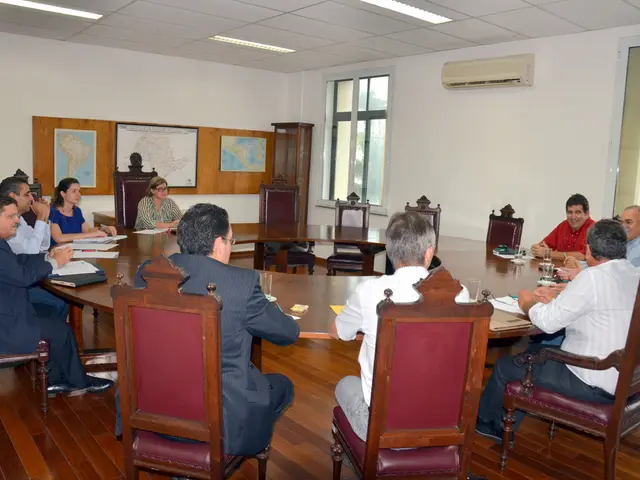Enhanced considerably...
Düsseldorf's Rhine cycle path, a bustling artery for cyclists, has undergone significant upgrades to improve safety and attractiveness for all users. The changes, particularly at the Joseph-Beuys-Ufer section, include enhanced infrastructure to separate bike traffic from pedestrian and vehicle flows, improved signage, and surface markings.
The newly expanded cycle path is now 2.75 meters wide, providing ample space for cyclists, and is separate from pedestrian traffic. The city's Mobility Commissioner, Jochen Kral, explained that the new allocation of side space at the Joseph-Beuys-Ufer has created more space for cycle and pedestrian traffic without reducing capacity for motor vehicle traffic.
The first approved cycle axis, dubbed "West," is intended to supplement the Neuss/Langenfeld cycle expressway in the south and connect to the planned cycle path along the southern ring road between the southern bridge and Volklinger Straße. The cycle route will lead from the southern ring road to the Arena and Freiligrathplatz via Volklinger Straße, Rhine embankment (Tonhallenufer and Robert-Lehr-Ufer), Rotterdamer Straße, Niederrheinstraße.
The ADFC Düsseldorf, the local cycling club, has expressed satisfaction with the upgrades, praising the pleasant surface for cycling. However, they have proposed retroactively applying direction arrows and a dashed center line on the new two-way cycle path at the Joseph-Beuys-Ufer to further enhance visual safety and prevent collisions.
The completion of the work on the cycle path was realized several weeks earlier than originally planned. The Ordnungs- und Verkehrsausschuss has also decided to implement a ramp below the Oberkasseler Bridge as part of the first cycle route. This ramp will lead cycle and pedestrian traffic from the Rhine promenade to the Tonhallenufer and Robert-Lehr-Ufer.
Mayor Stephan Keller announced the completion of the renovation of the Rhine cycle path, noting that the improvements are part of the city's efforts to improve and expand its cycling infrastructure. The city aims to focus on strategic connecting axes with the cycle routes, creating a network of intuitive, preferred connections for cycle traffic.
The Rhine cycle path is heavily travelled, with nearly a million cyclists registered at the Mannesmannufer counting station in 2021. The ADFC Düsseldorf has also demanded an additional protective device against the heavily-traveled roadway for a section of the new cycle path at the Joseph-Beuys-Ufer. Only absolutely necessary and traffic-securing sites are taking place on the cycle path during the pre-Christmas traffic, according to Jochen Kral.
Florian Reeh, head of the traffic management office, reported on the decision to implement the ramp below the Oberkasseler Bridge as part of the first cycle route. The city's commitment to improving cycling infrastructure is evident in these upgrades, aiming to make the path safer and more attractive for all users, encouraging more sustainable urban mobility while preventing accidents and congestion at critical points like Joseph-Beuys-Ufer.
The enhanced cycling infrastructure on the Rhine cycle path, including the Joseph-Beuys-Ufer section, is a significant step towards the city's goal of improving and expanding its cycling network, aligning with the strategy of focusing on strategic connecting axes within the health-and-wellness and fitness-and-exercise industry.
The recent improvements on the Rhine cycle path are not only benefiting the cycling industry, but also the finance sector, as the increased safety and attractiveness of the path may boost the city's economy by encouraging more sustainable urban mobility.
The completion of the first approved cycle axis, the West cycle route, will not only provide a safer route for cyclists, but could also potentially impact the transportation sector, by reducing traffic congestion and promoting the use of public transit and non-motorized transportation modes.




